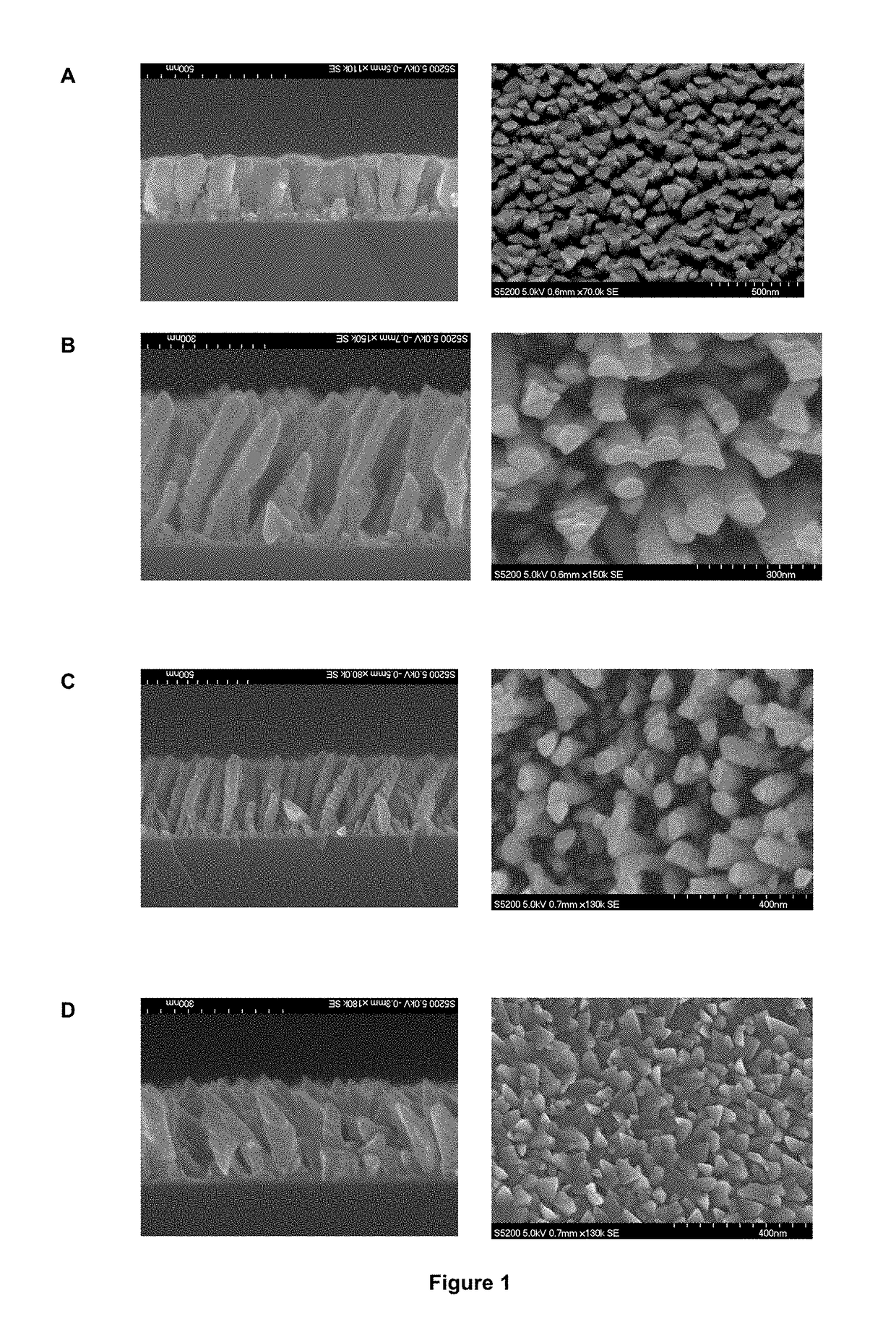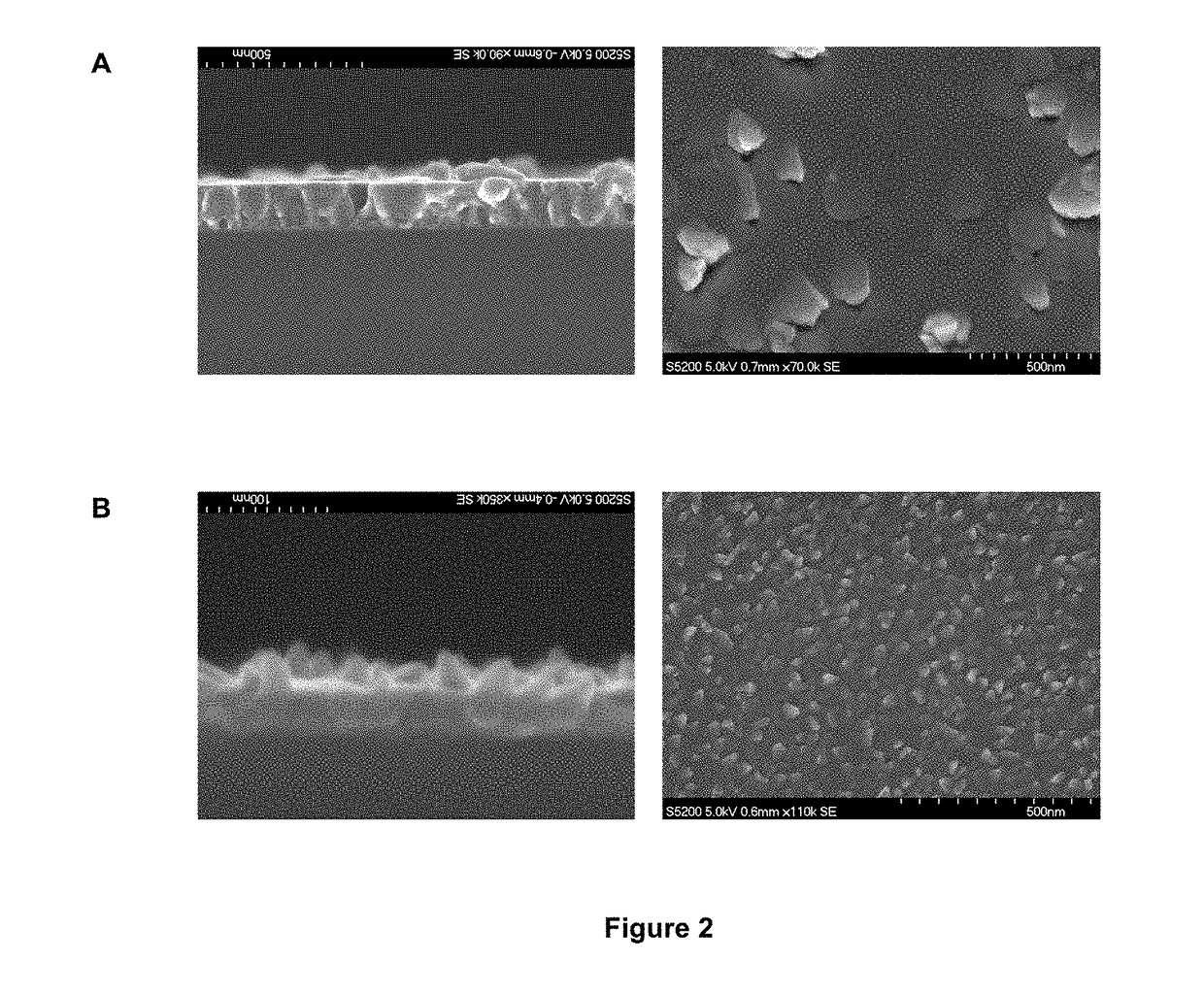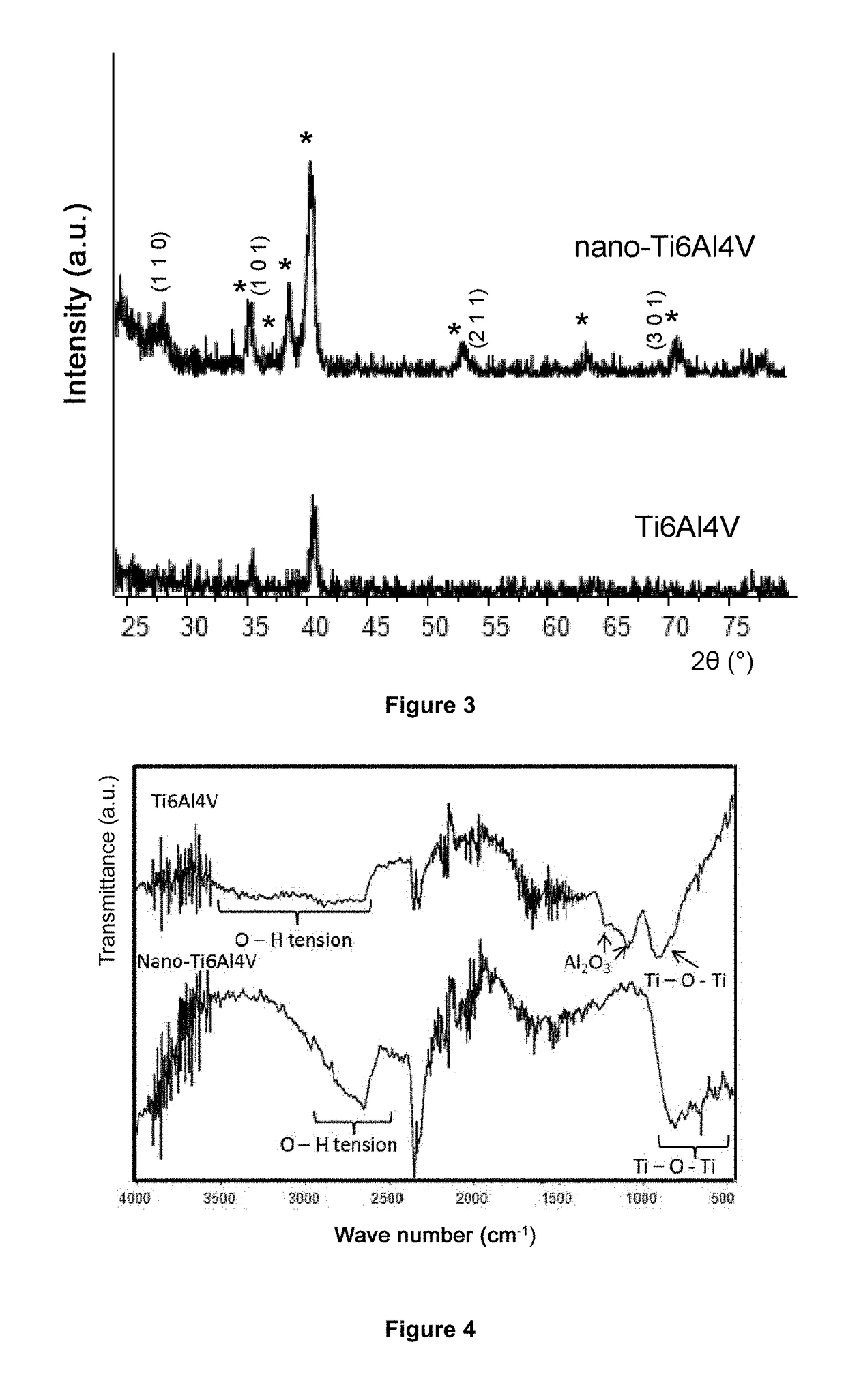Biocompatible implants made of nanostructured titanium with antibacterial properties
a nanostructured titanium, biocompatible technology, applied in the field of osseous implantology, can solve the problems of beads requiring a second surgery, toxicity problems, patient death, etc., and achieve the effects of excellent cellular development, short spacing, and high density of nanocolumns
- Summary
- Abstract
- Description
- Claims
- Application Information
AI Technical Summary
Benefits of technology
Problems solved by technology
Method used
Image
Examples
example 1
btained by Coating Deposition Using Glancing-Angle Cathode Sputtering on a Biomaterial
[0085]In this example, we indicate how the implant was formed.
[0086]Using glancing-angle cathode sputtering, a coating was deposited which was formed by nanostructured titanium on a mechanically mirror-polished Ti6Al4V alloy disc (root mean square roughness lower than 5 nm measured on a surface area of 4 μm2), 1 cm in diameter and 2 mm thick. The chamber had a base pressure (prior to the introduction of the gas) lower than 5×10−7 Pa (ultra-high vacuum) and the target-substrate distance was 22 cm. The 5-cm-diameter, 5-mm-thick target used was made of titanium with a purity of 99.999%, and, on the upper part, had a cylindrical chimney 5 cm in diameter and 9 cm in length (this chimney primarily serves to prevent cross-contamination with other targets in the chamber, but, moreover, contributes to the collimation of the atomic flow, by directing the flow of material towards the surface of the substrate)...
example 2
e Implant in Osseous Implantology
[0091]In this example, we show that the implant obtained under the conditions of Example 1 have osseointegrative properties that inhibit the formation of a bacterial biofilm.
[0092]The implant was obtained following the process of Example 1, using an argon pressure of 0.15 Pa and a GLAD angle of 80°. The temperature of the substrate was maintained below 350 K.
[0093]In this particular case, the surface of the implant is the surface of the coating, and is formed by nanostructured titanium which forms nanocolumns with dimensions ranging between 100 and 300 nm in height, and between 30 and 100 nm in diameter. The nanocolumns grow during deposition on the Ti6Al4V surface, and cover the surface with a high degree of density, i.e. a high degree of nanomotifs per unit surface area, with a mean space of 100 nm.
[0094]X-ray diffraction studies were performed (represented as X-ray diagrams or XRD) using a Philips X'Pert Model diffractometer in the 2θ range of 20-...
PUM
| Property | Measurement | Unit |
|---|---|---|
| Fraction | aaaaa | aaaaa |
| Pressure | aaaaa | aaaaa |
| Angle | aaaaa | aaaaa |
Abstract
Description
Claims
Application Information
 Login to View More
Login to View More - R&D
- Intellectual Property
- Life Sciences
- Materials
- Tech Scout
- Unparalleled Data Quality
- Higher Quality Content
- 60% Fewer Hallucinations
Browse by: Latest US Patents, China's latest patents, Technical Efficacy Thesaurus, Application Domain, Technology Topic, Popular Technical Reports.
© 2025 PatSnap. All rights reserved.Legal|Privacy policy|Modern Slavery Act Transparency Statement|Sitemap|About US| Contact US: help@patsnap.com



